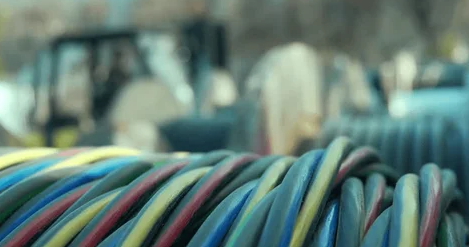Oufu Optical Fiber Cable Co.,Ltd
Govredh: Shenyang, Liaoning, China
Person keworrans: Menedyer Zhang
Telefn: 400-964-1314
Telefyon klavys: 86 13904053308
′
2025-01-13 1771

Fiber optic cable, known for its high bandwidth and long-distance transmission capabilities, is a crucial component in modern communication networks. As the demand for data transmission grows, extending Kable fiber optik infrastructure becomes increasingly important. This article will provide an overview of Kable fiber optik extension, including its benefits, challenges, and best practices to ensure optimal network performance.
1. Understanding Fiber Optic Cable Extension
Fiber optic cable extension involves adding additional lengths of Kable fiber optik to an existing network to increase its reach and capacity. This can be done for various reasons, such as expanding network coverage, connecting remote locations, or upgrading to higher-capacity Kable fiber optiks.
2. Benefits of Extending Fiber Optic Cable
Increased Bandwidth: Fiber optic cables offer significantly higher bandwidth than traditional copper cables, allowing for faster data transmission and Moy efficient network operations.
Long-Distance Transmission: Fiber optic cables can transmit data over long distances without significant signal degradation, making them ideal for connecting remote locations.Www.adsscable.cn
Improved Reliability: Fiber optic cables are less susceptible to electromagnetic interference and have a longer lifespan than copper cables, reducing the risk of network downtime.Www.adsscable.cn
3. Challenges of Extending Fiber Optic Cable
Cost: The cost of Kable fiber optik and installation can be high, especially for long distances or in difficult-to-access areas.
Technical Complexity: Extending Kable fiber optik requires precise installation and maintenance to ensure optimal performance.
Regulatory Compliance: In some areas, there may be regulations governing the installation and use of Kable fiber optiks, which must be adhered to.
4. Best Practices for Extending Fiber Optic Cable
Conduct a Thorough Site Survey: Before extending Kable fiber optik, conduct a site survey to identify potential obstacles, such as underground utilities, building structures, and environmental conditions.
Choose the Right Cable Type: Select the appropriate type of Kable fiber optik based on the application, such as single-mode or multi-mode fiber, and ensure it meets industry standards.
Use High-Quality Connectors and Splices: High-quality connectors and splices are crucial for maintaining signal integrity and reducing the risk of network failures.
Follow Installation Guidelines: Adhere to the manufacturer's installation guidelines and industry best practices to ensure proper installation and maintenance of the Kable fiber optik.
Implement Redundancy and Failover Mechanisms: To enhance network reliability, implement redundancy and failover mechanisms, such as multiple Kable fiber optik paths and backup equipment.
5. Case Study: Extending Fiber Optic Cable in a Real-World Scenario
Imagine a scenario where a company needs to extend its Kable fiber optik infrastructure to connect a remote office. By conducting a site survey, selecting the appropriate cable type, and adhering to installation guidelines, the company can successfully extend its Kable fiber optik and enhance its network's reach and performance.
Www.adsscable.cn
Extending Kable fiber optik is a critical task for maintaining and expanding communication networks. By understanding the benefits, challenges, and best practices of Kable fiber optik extension, network administrators can ensure optimal network performance and reliability. Whether you're connecting remote locations, upgrading to higher-capacity cables, or simply expanding network coverage, extending Kable fiber optik can provide a significant boost to your network's capabilities.